Deciphering the tumor immune microenvironment: single-cell and spatial transcriptomic insights into cervical cancer fibroblasts
- PMID: 40616092
- PMCID: PMC12228347
- DOI: 10.1186/s13046-025-03432-5
Deciphering the tumor immune microenvironment: single-cell and spatial transcriptomic insights into cervical cancer fibroblasts
Abstract
Background: Cervical cancer (CC) remains a significant global health challenge despite advancements in screening, HPV vaccination, and therapeutic strategies. Tumor heterogeneity, driven by epigenetic modifications, affects immune evasion, metastasis, and treatment response. Cancer-associated fibroblasts (CAFs) play a crucial role in CC progression and therapy resistance. Single-cell sequencing offers new insights but remains underutilized in CC research. This study integrates single-cell RNA sequencing (scRNA-seq), spatial transcriptomics, and deconvolution analysis to identify key genes and immunotherapy targets. By constructing a prognostic model and exploring the immune microenvironment, we aim to provide novel insights into CC pathogenesis and potential therapeutic strategies.
Methods: We utilized scRNA-seq, spatial transcriptomics, deconvolution analysis, and pseudotime trajectory mapping to delineate fibroblast subtypes within the tumor immune microenvironment (TIME) of CC. Functional annotations, differential gene expression profiling, cell-cell communication pathways, and transcription factor networks were systematically analyzed. A prognostic model based on bulk RNA-seq data was constructed and validated through survival analysis, with correlations to immune microenvironment characteristics. Functional experiments investigated the role of SDC1, a critical mediator of fibroblast-tumor crosstalk. Additionally, Fibroblast-tumor cell co-culture systems and functional assays were employed to investigate the paracrine role of SDC1. The CAF MYH11⁺ subpopulation was isolated via fluorescence-activated cell sorting (FACS). Multiplex immunofluorescence and immunohistochemical analyses were performed on both cultured cells and human cervical cancer tissue samples to characterize the spatial distribution and dynamic remodeling of MYH11 during stromal reorganization.
Results: Six distinct fibroblast subtypes were identified, including the C0 MYH11 + fibroblasts, which exhibited unique roles in stemness maintenance, metabolic activity, and immune regulation. Spatial and functional analyses revealed that the C0 subtype is central to tumor-fibroblast interactions, particularly through the MDK-SDC1 signaling axis. The prognostic model incorporating fibroblast-specific markers demonstrated robust predictive power for patient survival outcomes. Additionally, in vitro SDC1 knockdown significantly inhibited CC cell proliferation, migration, and invasion. Fibroblasts show spatially regulated heterogeneity, with activation markers enriched in the tumor zone and MYH11 highest in normal zones, indicating dynamic stromal remodeling. C0 MYH11 + CAF Promotes Tumor Cell Proliferation, Migration, and Inhibits Apoptosis via Soluble SDC1.
Conclusion: Our results illustrate, in some ways, the possible immunomodulatory and tumor supporting roles of CAFs in CC TIME and highlight the possibility that the MDK-SDC1 pathway is a promising therapeutic target. This study not only promotes a partially new understanding of temporal heterogeneity in CC, but also provides a possible reference base for the development of new biomarkers and immunotherapy approaches to improve clinical outcomes.
Keywords: Cancer-associated fibroblasts; Cervical cancer; Immunomodulation; SDC1; Single-cell RNA sequencing; Spatial transcriptomics; Tumor immune microenvironment.
© 2025. The Author(s).
Conflict of interest statement
Declarations. Ethics approval and consent to participate: The study protocols were performed according to Declaration of Helsinki. Competing interests: The authors declare no competing interests.
Figures

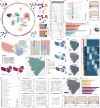
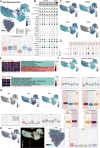

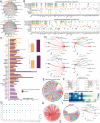
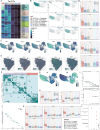

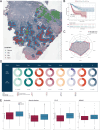

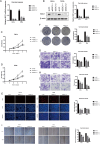
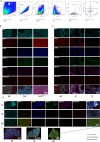
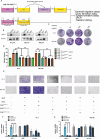
References
-
- Bray F, Laversanne M, Sung H, Ferlay J, Siegel RL, Soerjomataram I, Jemal A. Global cancer statistics 2022: GLOBOCAN estimates of incidence and mortality worldwide for 36 cancers in 185 countries. CA-CANCER J CLIN. 2024;74:229–63. - PubMed
-
- Singh D, Vignat J, Lorenzoni V, Eslahi M, Ginsburg O, Lauby-Secretan B, Arbyn M, Basu P, Bray F, Vaccarella S. Global estimates of incidence and mortality of cervical cancer in 2020: a baseline analysis of the WHO Global Cervical Cancer Elimination Initiative. LANCET GLOB HEALTH. 2023;11:e197-206. - PMC - PubMed
-
- Geistlinger L, Oh S, Ramos M, Schiffer L, LaRue RS, Henzler CM, Munro SA, Daughters C, Nelson AC, Winterhoff BJ, Chang Z, Talukdar S, Shetty M, Mullany SA, Morgan M, Parmigiani G, Birrer MJ, Qin LX, Riester M, Starr TK, Waldron L. Multiomic Analysis of Subtype Evolution and Heterogeneity in High-Grade Serous Ovarian Carcinoma. CANCER RES. 2020;80:4335–45. - PMC - PubMed
-
- Pelham CJ, Nagane M, Madan E. Cell competition in tumor evolution and heterogeneity: Merging past and present. SEMIN CANCER BIOL. 2020;63:11–8. - PubMed
MeSH terms
Substances
LinkOut - more resources
Full Text Sources
Medical
Miscellaneous

